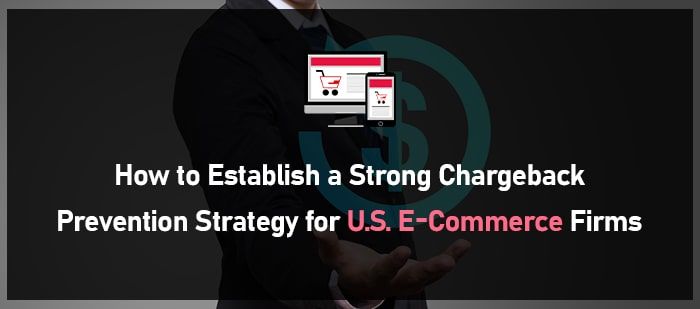
In the competitive realm of U.S. e-commerce, establishing a robust chargeback prevention strategy is crucial for maintaining profitability and customer trust. Chargebacks, while sometimes necessary for consumer protection, can severely impact a business’s bottom line and reputation if not managed effectively.
E-commerce chargeback mitigation requires a multi-faceted approach that includes understanding the common causes of chargebacks, implementing best practices for transaction monitoring, and fostering transparent communication with customers.
By leveraging technology and analytics, businesses can proactively identify potential chargeback triggers, such as fraud or customer dissatisfaction, and address them before they escalate. Additionally, training staff to recognize the signs of potential disputes and enhancing the checkout experience can significantly reduce the likelihood of chargebacks.
Ultimately, a well-defined strategy not only safeguards revenue but also strengthens the overall relationship with customers, leading to a more sustainable and successful e-commerce operation.
Understanding the Root Causes of Chargebacks
Chargebacks can originate from a variety of sources, each necessitating its own approach for mitigation. One common cause is fraudulent activity, where unauthorized transactions prompt consumers to dispute charges. Additionally, friendly fraud occurs when customers make legitimate purchases but later dispute the charges, often due to forgetfulness or misunderstanding of return policies.
Poor customer service and unmet expectations can also lead to chargebacks, as dissatisfied customers may see reversing the transaction as the only resolution. Billing errors, such as incorrect amounts or duplicate charges, frequently result in chargeback disputes as well.
Insufficient product descriptions or misleading advertisements can leave customers feeling deceived, prompting them to challenge charges. Understanding these root causes is essential for developing targeted strategies to prevent chargebacks. By analyzing patterns and customer feedback, e-commerce firms can pinpoint vulnerabilities in their transaction processes and implement corrective measures.
Leveraging data analytics, businesses can track and predict chargeback trends, allowing for proactive adjustments to their strategies. This comprehensive understanding ensures that chargeback prevention efforts are both efficient and effective.
Some Related Blogs
- The Impact of the 2024 Payment Services Directive (PSD2) on U.S. Chargeback Processes
- Chargeback Dispute Resolution: Best Practices for U.S. E-Commerce Retailers
- Understanding Chargeback Rights and Obligations for U.S. Businesses and Consumers
- The Financial Impact of Chargebacks: How U.S. Companies Can Save with Strategic Solutions
Implementing Robust Fraud Detection Systems
Implementing robust fraud detection systems is critical for U.S. e-commerce firms aiming to minimize chargebacks. Advanced technologies such as machine learning and artificial intelligence can be employed to analyze transaction patterns in real-time, flagging suspicious activities before they result in chargebacks. Integrating these systems with your e-commerce platform enables continuous monitoring and instant alerts for anomalies like unusually high transaction volumes or discrepancies in shipping and billing addresses.
Additionally, employing multi-layer authentication processes, such as two-factor authentication (2FA) and biometric verification, adds an extra layer of security, making it more difficult for fraudulent transactions to succeed. Regularly updating fraud detection software ensures that you stay ahead of new and evolving threats.
Collaborating with financial institutions and payment processors can also provide additional layers of fraud screening and shared intelligence on emerging fraud trends. By incorporating these advanced detection mechanisms, e-commerce businesses can significantly reduce the incidence of fraud-related chargebacks, thereby protecting their revenue and enhancing overall trust with their customers.
Enhancing Customer Service and Communication
Exceptional customer service and transparent communication are cornerstones of an effective chargeback prevention strategy. Addressing customer concerns promptly and professionally can often resolve issues before they escalate into chargebacks.
Implementing a robust customer support system, including accessible channels like live chat, email, and phone support, ensures customers can easily reach out with questions or complaints. Clear communication regarding shipping times, return policies, and any potential delays helps manage customer expectations and reduces the likelihood of disputes.
Providing detailed order confirmations and regular updates on order status keeps customers informed and reassured about their purchases. Encouraging customer feedback through post-purchase surveys can also highlight areas for improvement and catch potential issues early.
Additionally, a hassle-free return process that clearly outlines steps and conditions can prevent misunderstandings and dissatisfaction. Empowering customer service representatives with the knowledge and tools to address complaints effectively and empathetically can turn a negative experience into a positive one, fostering customer loyalty and trust.
By prioritizing excellent customer service and transparent communication, e-commerce firms can mitigate the risk of chargebacks and build stronger, more resilient relationships with their customers.
Clear and Transparent Payment Processes
Clear and transparent payment processes play a pivotal role in preventing chargebacks for U.S. e-commerce firms. Ensuring that all charges are easily understandable helps to prevent confusion and disputes. Providing detailed invoices that itemize each purchase, including taxes and shipping fees, can clarify any potential misunderstandings about the billed amount.
![]()
Email us anytime!
Email customer service 24/7
![]()
Call us anytime!
Reach customer care 24/7 at +1 (888) 901-8653
Displaying terms and conditions prominently during the checkout process, especially regarding refunds and returns, educates customers and sets proper expectations. Offering various payment options and ensuring that each method is secure and reliable can also reduce the risk of chargebacks.
Utilizing recognizable billing descriptors on credit card statements can prevent customers from mistaking legitimate charges for fraudulent ones. Additionally, implementing secure payment gateways and adhering to PCI DSS (Payment Card Industry Data Security Standard) compliance ensures that customers’ payment information is protected, further building trust.
Keeping communication open and transparent during the payment process reassures customers that their transactions are secure and straightforward. By making every aspect of the payment process clear and transparent, e-commerce firms can significantly reduce the likelihood of chargebacks resulting from misunderstandings or billing errors.
Regularly Reviewing and Updating Policies
Regularly reviewing and updating policies is essential for maintaining an effective chargeback prevention strategy in the dynamic landscape of U.S. e-commerce. Business environments and consumer behaviors continuously evolve, necessitating periodic reassessments of existing policies.
Analyzing recent chargeback data can reveal emerging trends and highlight areas where current policies may fall short. For instance, if a spike in chargebacks is linked to a particular payment method or promotional campaign, adjustments can be made accordingly.
It’s also crucial to stay informed about regulatory changes and industry standards that may impact your chargeback prevention practices. Collaborating with legal advisors and industry experts ensures that your policies are compliant and up-to-date.
Regular training sessions for staff on updated policies can enhance their ability to manage disputes effectively. Furthermore, soliciting customer feedback about policy clarity and fairness can provide valuable insights for refinement. By keeping policies current and aligned with both market conditions and consumer expectations, e-commerce firms can better anticipate and mitigate chargeback risks.





